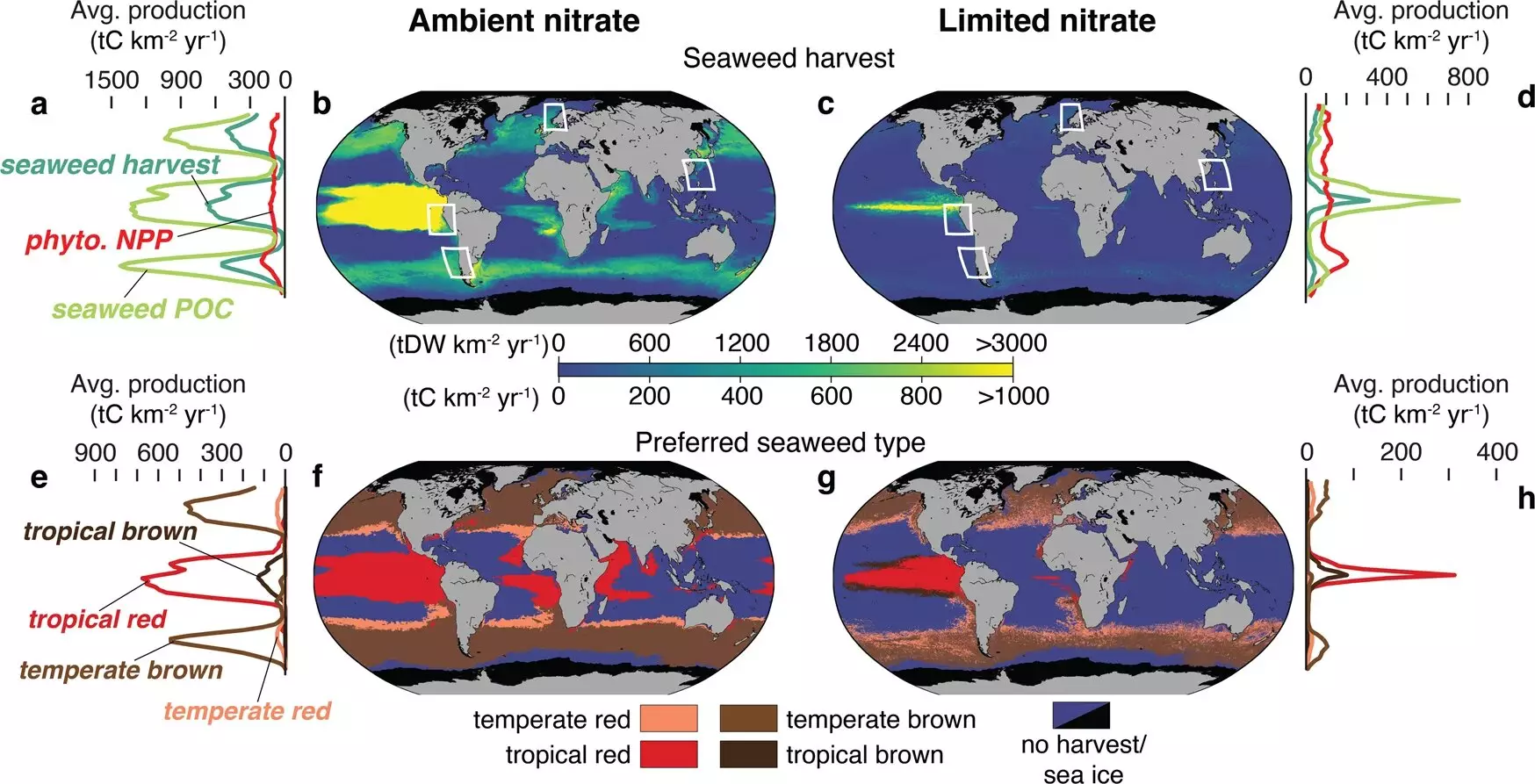The use of seaweed farming to capture sufficient carbon to meet climate goals may not be practical due to the vast ocean areas required to remove between 2.5 and 13 gigatons of atmospheric carbon per year, according to a study published in Communications Earth & Environment. The research suggests that around one million square kilometers of the most productive ocean regions in exclusive economic zones (EEZs) would be needed to cultivate enough seaweed to remove a single gigaton of carbon from the atmosphere each year.
Seaweed is capable of removing carbon dioxide from the atmosphere by converting it into organic biomass through photosynthesis. This biomass can then sink into the deep ocean, removing carbon from surface waters. However, most global estimates of seaweed’s efficacy in capturing carbon are based on extrapolating observations from a limited number of sites on a global scale.
To project potential seaweed productivity and harvestable biomass in different ocean conditions and nutrient availability, Isabella Arzeno-Soltero and her colleagues analyzed predictions from the Global Macroalgae Cultivation Modeling System. They estimated that over one million square kilometers of the most productive EEZs in the equatorial Pacific would need to be farmed to capture one gigaton of seaweed-captured carbon each year.
Cultivation areas would have to be tripled outside of these productive equatorial waters to harvest the same amount of seaweed carbon due to the variation in seaweed productivity and growth. Nutrients would need to be supplemented to maintain seaweed productivity, possibly through “depth cycling” the seaweed by physically moving between deep and shallow water, or by upwelling nutrients from deeper water.
The authors suggest that to accurately assess the carbon removal potential of seaweed cultivation, the global variation in seaweed growth potential must be understood, and future research into the refinement of seaweed farming is necessary.
While seaweed farming has the potential to capture carbon, the large ocean areas required to remove sufficient amounts of carbon may not be feasible, according to the study. To meaningfully assess the potential of seaweed cultivation in capturing carbon, the variation in seaweed growth potential must be understood, and further research in refining seaweed farming needs to be done.


Leave a Reply